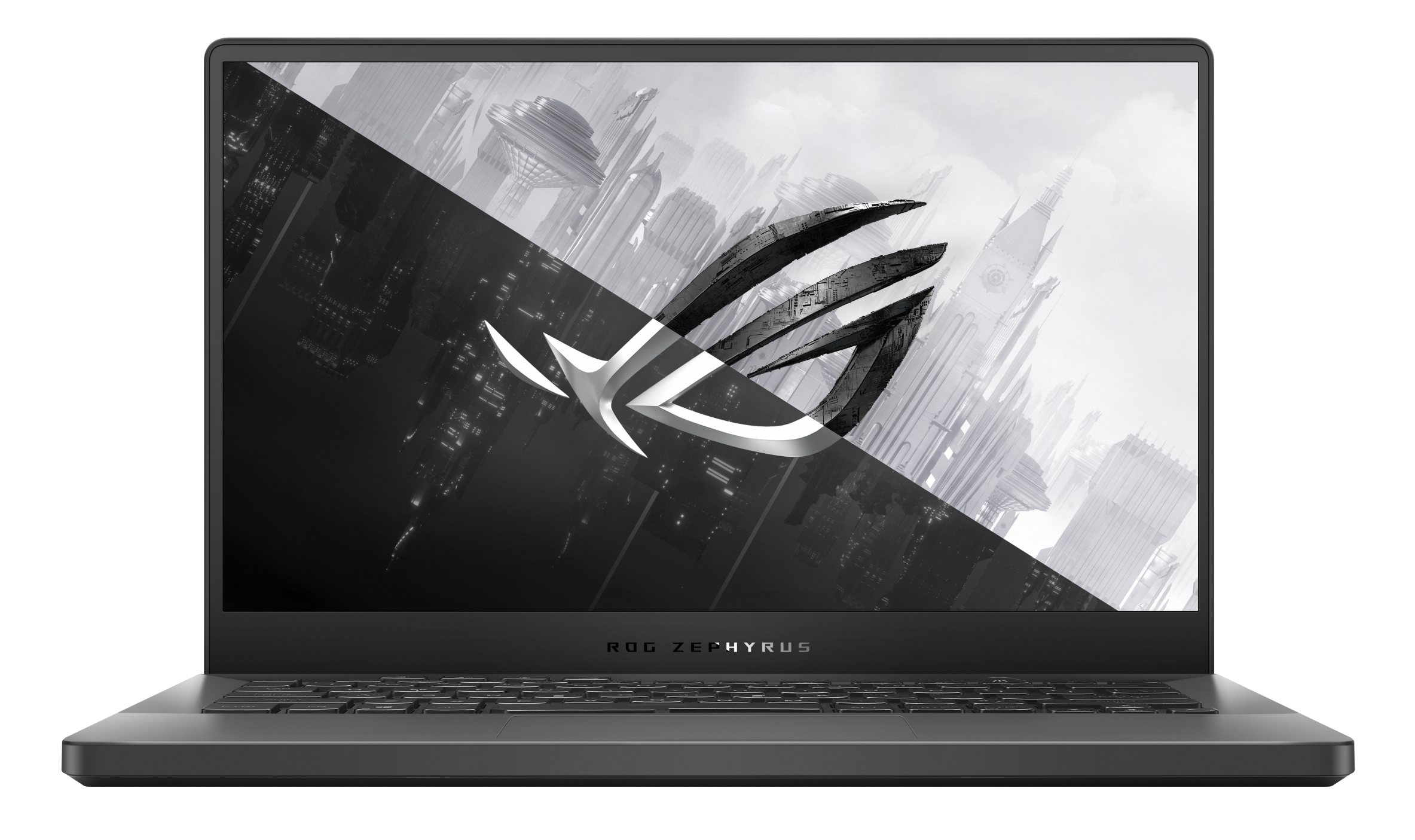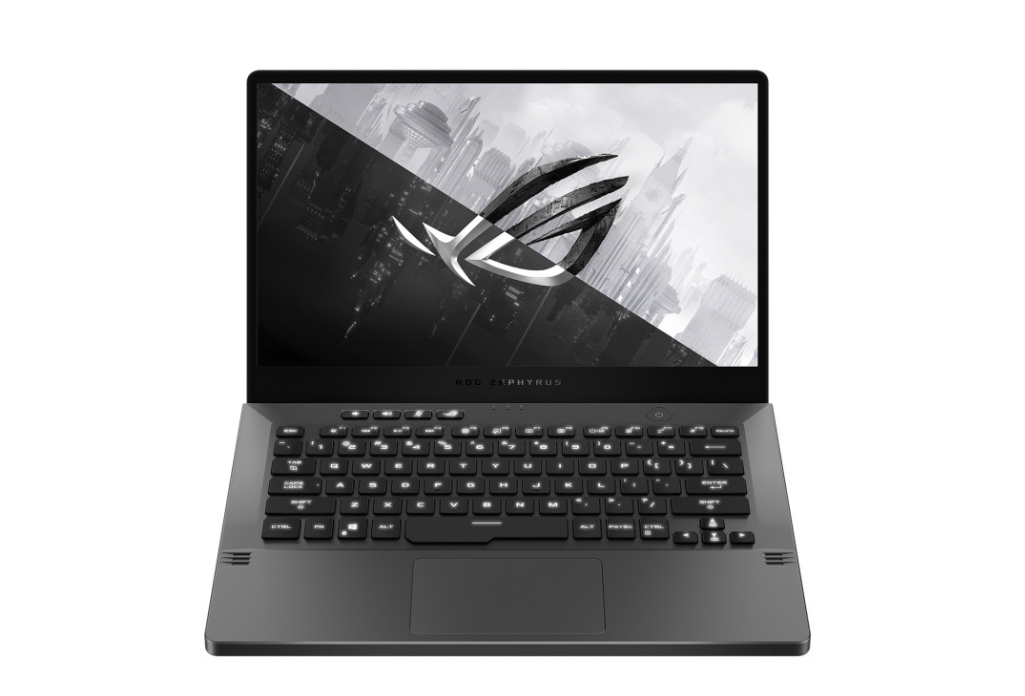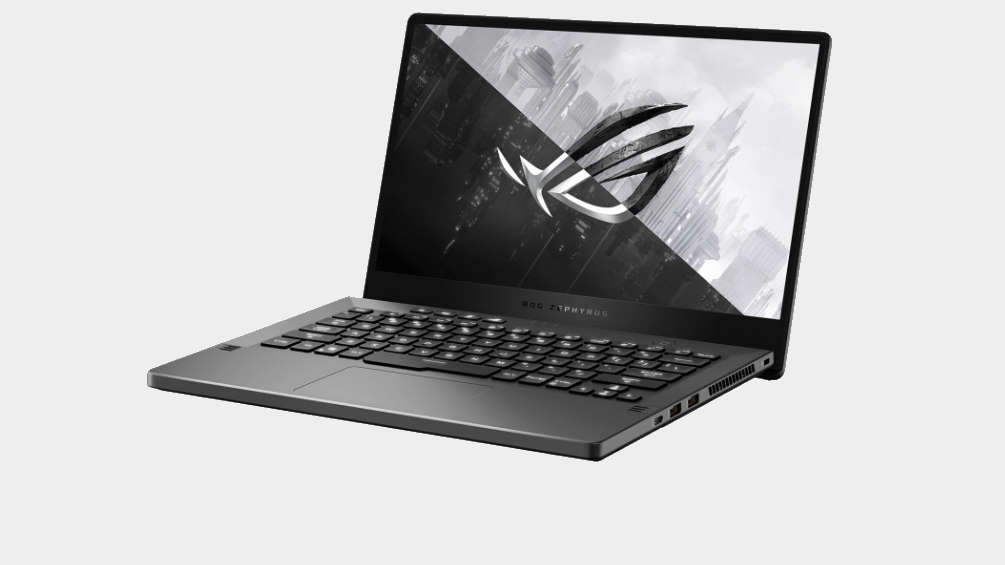Our Verdict
This could be your perfect laptop, but you're going to need that raw processor performance to be able to justify it to yourself.
For
- Incredible CPU performance
- Beautifully vibrant screen
- Gorgeous design and materials
Against
- Expensive for 1080p gaming
- Can be loud when pushed
PC Gamer's got your back
The Asus ROG Zephyrus G14 is not your average gaming laptop. It's something quite special. I'm not just talking about the machined magnesium-aluminum 14-inch chassis either, although that really is beautiful, it's more to do with the fact that this represents a fundamental shift away from the norm that sees Intel as the chip of choice for serious laptop performance. That is no longer the case. In fact it's far from it, because the Asus Zephyrus G14 is the first outing for AMD's newest chip, the Ryzen 9 4900HS. And this CPU could change everything.
AMD has been performing well in the desktop space, where its core counts have been putting the pressure on Intel, but that hasn't extended to the laptop market. Until now. The Ryzen 9 4900HS is an 8-core, 16-thread monster that nominally runs a 3.0GHz but can turbo all the way up to 4.3GHz, yet still boasts a 35W TDP. The very fact you can take all that power and still slide it into a thin and light laptop, like this Asus Zephyrus G14, is truly incredible.
Price: $1,449 (£1,799)
Processor: AMD Ryzen 9 4900HS
Graphics: Nvidia GeForce RTX 2060 Max-Q
Memory: 16GB DDR4-3200
Display: 14-inch IPS-level, up to 120Hz
Resolution: 1920 x 1080
Storage: 1TB SSD NVMe PCIe 3.0
Battery: 180W
Connectivity: 1 x USB3.2 Gen2 Type-C with DisplayPort 1.4 and Power Delivery, 1 x USB3.2 Gen2 Type-C, 2x USB3.2 Gen1 Type-A, 1x HDMI 2.0b, 1x 3.5mm headphone and microphone combo jack
OS: Windows 10 Home/Professional 64 Bit
Dimensions: 12.76" (324mm) x 8.74" (222mm) x 0.70" (179mm)
Weight: 3.53lbs
Warranty: One year
I've pushed this chip through its paces in our normal suite of tests, as well as few extra processor benchmarks for good measure, and I'm completely blown away with it. Taking a quick look at Cinebench R15 as an example, you're looking at a multi-core result of 1,864, where something like Intel's 9750H manages just 1,235. The same is true in X264 video encoding, where you'll manage 34fps when encoding on this machine, where intel is shy of 24fps. This is the sort of performance usually reserved for desktop performance, and it's blowing my mind.
Before I completely disappear down that particular performance rabbit hole though, it's worth returning to the fact that there's a lot more to this laptop than just the processor. Inside that meticulously machined chassis you'll also find a 1TB NVMe SSD, 16GB of DDR4-3200 memory, and a vibrant 1080p display that can run at up 120Hz and offers a full 100% sRGB colorspace that is Pantone validated. In an ideal world, the SSD would be a PCIe gen-4 model, but in reality you get a PCIe 3.0. It's still 'fast', but it's not the fastest.
You'll have noticed I've not talked about the graphics power yet, so let's address that. The AMD Ryzen 9 4900HS has integrated graphics, but you won't want to go anywhere near that when it comes to proper gaming. Luckily this isn't the only polygon crunching silicon in the machine, as the chief engine here is the GeForce RTX 2060 in Max-Q spin. This has 1920 CUDA cores and a boost clock of 1,185 MHz.

Cinebench R15: 193 cb (Single core)
Cinebench R15: 1,864 cb (multi-core)
CrystalDiskMark Q32 Sequential (Read): 1,739 MB/s
CrystalDiskMark Q32 Sequential (Write): 1,717 MB/s
PCMark 10 Express: 5317 points
Shadow of the Tomb Raider (Ray-tracing): 41 fps
Total War: Warhammer II: 56 fps
The Division 2: 53 fps
Metro Exodus (RTX): 40 fps
3DMark Fire Strike: 13,875 points
Battery Life (gaming): 1 hours and 57 minutes (Gaming)
It's worth going a little in depth with the gaming performance on offer here, because this is a lot of money for a laptop boasting a RTX 2060, even one that comes with a top of the line CPU. The good news is that most games will run at the highest settings at the native resolution and you should be able to enjoy silky smooth playback. This is because the GeForce RTX 2060 is a great pairing for a 1080p panel. Where things get a little tricky is when you get to ray tracing titles, which is probably something you'll want to do, given it can handle them.
As an example, we spent some time with Shadow of the Tomb Raider, which supports ray traced shadow (the clue is in the name), but these shadows do have a profound impact on performance -- although to be fair they can look pretty special, so it can be worth flicking them on. Without tracing any rays, but with everything else set to 'highest', we witnessed a thoroughly respectable 64 fps using the game's default benchmark.
Put those ray tracing cores to work though, and this will drop to 55 fps even at the 'Medium' setting. Up the Shadows to the 'High' and you'll be rewarded with some gorgeous light play, but you'll also find yourself hitting 41fps, which isn't exactly ideal. At the 'Ultra' setting you're staring at 39 fps on average, dipping down to 26 fps at its lowest point. A beautiful 26 fps, but it's hardly where you want your framerate.
What about DLSS I hear you cry? Well turning this on with the shadows set to high results in the framerate bouncing back up to 67 fps again, although it does produce a blurred image, which isn't going to be for everyone. Still if Shadow of the Tomb Raider gets any DLSS 2.0 love, then this is worth keeping an eye on.
We had a similar experience in Metro Exodus, which makes great use of global illumination. Running in RTX mode produced 40 fps, while you'll hit 53 fps using the high preset. So you can get these AAA titles with everything maxed out, even RTX ones, but you are pushing the RTX 2060 to the limit, and it shows. Unfortunately there's no way of getting anything more powerful into a chassis this small at the moment, so you're going to have to play with those settings for silky smooth performance.
When it comes to battery life, the Asus ROG Zephyrus G14 sat pretty much where we'd expect it. Running games when not plugged in means you'll get a shade under 2 hours out of it, which is fairly normal for a gaming laptop. If you're doing more serious work, then PCMark10's productivity battery test suggests you'll get 7 hours and 21 minutes out of it, which is nothing to be sniffed at.

Performance aside, there are plenty of other touches that elevate this machine above the norm, like the fact that the power button integrates a fingerprint sensor, so you have an efficient way of making sure that only you can sign in. Also, when you open the laptop up, the lid lifts the base of the unit up slightly to make for a more comfortable typing experience and also helps to improve airflow.
Cooling all these top-notch components in a 14-inch chassis requires something special, and Asus has risen to the challenge here. The heart of the cooling solution is made up of five heatpipes that cover the CPU and GPU, as well the VRMs next to them. The fans are a tweaked rendition of those found in the 15-inch Zephyrus, with alternating fin lengths to improve airflow, while trying to keep noise levels down.
At full power this laptop can get loud still, but you can control the noise and performance levels using the Asus Armory Crate software, which has its own button next to the audio controls at the top of the keyboard. Here you can choose between Silent, Performance, Turbo, and manual. We tested using the Performance preset as this offers the best balance between performance and thermals (noise). Upping the profile to Turbo does give a little more wiggle room for CPU-centric work, but didn't have much impact in gaming (barely a frame or two at most in testing).
In some respects the Asus ROG Zephyrus G14 exists in a bit of a strange place, in that it's not an out-and-out gaming laptop. I mean it definitely does game, but you're paying a lot of money for a CPU that you won't really utilize unless you do more than game. It will quite happily chew through 3D rendering, video encoding, and the like, but if you're not going to do that, then you're not getting the most out of it. Which means you should probably save your money and go for something slightly less focused on CPU power.
This could be your perfect laptop, but you're going to need that raw processor performance to be able to justify it to yourself.
Alan has been writing about PC tech since before 3D graphics cards existed, and still vividly recalls having to fight with MS-DOS just to get games to load. He fondly remembers the killer combo of a Matrox Millenium and 3dfx Voodoo, and seeing Lara Croft in 3D for the first time. He's very glad hardware has advanced as much as it has though, and is particularly happy when putting the latest M.2 NVMe SSDs, AMD processors, and laptops through their paces. He has a long-lasting Magic: The Gathering obsession but limits this to MTG Arena these days.



